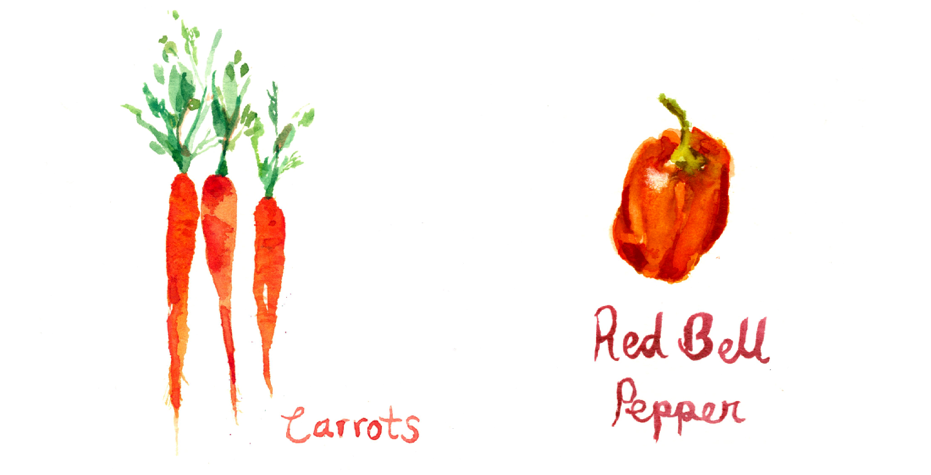Happy spring! At the start of this season, we’re thinking about spring harvest and what new veggies we’ll incorporate into our diets over the next few months.
Eating seasonally means purchasing and consuming food shortly after it is harvested. For this reason, eating seasonally often means eating locally. If you’ve ever picked up a pint of blueberries in the grocery store and been discouraged to see they’re grown overseas, you’re not alone. In an age when we can get almost any veggie year-round, eating in time with nature’s rhythms takes more planning and a willingness to forego certain foods. Farmer’s markets, farm stands, and CSA programs are great options for purchasing seasonally-appropriate produce. Some grocery stores also source from nearby farms—check labels to learn where (and when) your food is produced.
Seasonal eating makes sense for a number of reasons—not the least of which is that it’s delicious! Below, we share a few reasons to align your diet with the calendar, plus an original recipe using warm-weather veggies.
- Diversity. You might never try kohlrabi or romanesco if you eat the same veggies year-round. By eating seasonally, you consume produce grown in spring, summer, fall, and winter, including lesser-known varieties. Seasonal eating introduces a diversity of flavors, nutrients, textures, and vitamins into your diet, which improves health and makes for more interesting eating!
- Taste. It’s no secret that a late-summer tomato is better than a tomato any other time of the year. Seasonal crops are harvested at peak ripeness and they don’t travel long distances to arrive at your plate. That makes seasonal food fresher, riper, and tastier.
- Savings. Crops that are grown during a season cost less to produce—and therefore less to purchase—than crops grown out of season. Eat seasonally, save money!
- Community. By eating in time with the seasons, you’ll support local farms and farmers. Voting with your wallet for seasonally-produced fruits and vegetables strengthens local food systems by equipping farmers to continue growing and selling food at the appropriate times. In addition, if you purchase your food from farmer’s markets or CSA programs, you’ll enjoy the transparency of meeting the people who grow your food.
Use this seasonal food guide to out which foods are in season near you.
Raw Pad Thai Zoodle Salad
A twist on Pad Thai. This crisp and crunchy salad is complimented by a savory, creamy dressing.
Total time: 15 minutes
Yield: 2+ servings
Ingredients:
For the salad:
- 2-3 small or 1 large bok choy, thinly sliced
- ¼ – ½ head purple cabbage, thinly sliced
- 1-2 bell pepper, quartered and thinly sliced
- 1-2 large carrots, thinly sliced in rounds
- 1-2 medium zucchini, spiralized or julienned, optional
- 1-2 green onions, chopped
For the dressing:
- ¼ – ⅓ cup almond butter
- ½ – 1 medium zucchini, chopped
- ¼ – ½ lemon, peeled or juiced
- 1-2 dates, pitted
- 1-2 teaspoons miso paste
- 1 garlic clove or ½ – 1 teaspoon granulated garlic
- Knob fresh or ½ – 1 teaspoon ground ginger
- Pinch cayenne pepper, optional
- Water, as needed
- Pinch sea salt
- Fresh basil, optional
Directions:
- In a large serving bowl, toss together veggies.
- Place all ingredients for the dressing, except for the water, into a high-speed blender. Blend on high until smooth, slowly streaming in water to help blend, keeping the dressing pourable but on the thick side. Taste and blend in any additional ingredients.
- Pour enough dressing to evenly coat the veggies. Serve garnished with fresh basil, additional green onions, or sesame seeds.
Notes:
- Swap the almond butter for other nut or seed butter like tahini or sunflower seed.
- Use raw apple cider vinegar in place of lemon if desired.
Original recipe by Noelle Parton, copyright 2017. Illustrations by Katie Hibbard.
